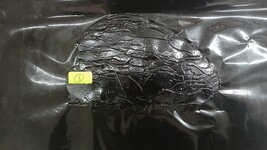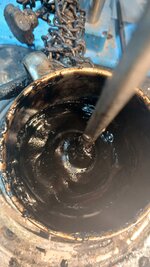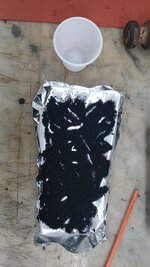It appears to me that you do not have appropriate equipment to process rubber. You need a three-roll mill or a two-roll mill. These mills pass the rubber and other ingredients though a tiny gap of a few hundredths of an inch between two or more rolls moving at differing surface speeds. This creates extremely high shear forces on a small volume of material. The close proximity to the roll surface also helps control the temperature from rising excessively due shear heating.
In the laboratory, one alternative process is to dissolve the rubber into a suitable solvent, add the solution to your formulation, and then remove the solvent by evaporation.



